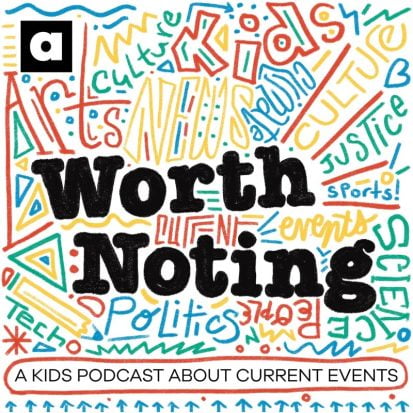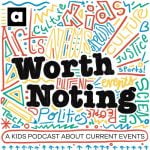
Sharing Folktales with Rebecca Sheir
Leave a reviewRebecca Sheir shares THE GREAT BALL GAME, a classic folktale originating from the Cherokee, Creek, Ojibway and Menominee people of North America, adapted for a contemporary audience by the host of the Circle Round podcast.
© A Kids Company About | 13:54
|Season: 5 |Episode: 2 |
Full episode description
 Episode One: Nic Stone
Episode One: Nic Stone
This is an Episodic show. You can listen to it in any order, but episode one is always a great place to start.Full Episode description
Rebecca Sheir shares THE GREAT BALL GAME, a classic folktale originating from the Cherokee, Creek, Ojibway and Menominee people of North America, adapted for a contemporary audience by the host of the Circle Round podcast.
NOTABLE QUOTES:
(3:28) “So I do try to think of a bunch of different children. So I’m not just writing for one person because our listeners physically, literally span the globe.”
(5:25) “Why is the ocean salty? Why don’t cats and dogs get along? Why do skunks have a weird smell when they spray? Where does thunder and lightning come from? There have been folktales written about all of these things.”
(7:27) “Most importantly, many valuable lessons are imparted about the importance of embracing individuals who are different, about embracing diversity, celebrating non-conformity, including others, and realizing that being different can make you stronger.”
(10:15) “Don’t be afraid to tell your stories. You don’t have to rely on a famous author or podcast host or movie maker to tell a story. You have your own stories you can tell. It can be a story about you, how you spent your summer vacation. That could be a fascinating tale. Or you could go ahead and make up characters. Make a talking bat, you know?
You’ve got stories. You just have to use your imagination. It’s ready and waiting for you. ”
ADDITIONAL LINKS:
- Website – Circle Round
- The Great Ball Game podcast episode – Circle Round Episode 56
- Purchase the Book – The Great Ball Game by Rebecca Sheir
TALK ABOUT THE EPISODE:
- What is a folktale? What are some examples of folktales you have heard or heard shared with you?
- How would you describe a bat to someone who has never seen one? What characteristics make a bat similar or different to a bird? To an animal?
- Ms. Sheir shared that artist Joshua Pawis-Steckley included severals examples of Ojibwe symbolism and iconography throughout the illustrations in this book. What are some symbols or icons you see in your classroom, home, or neighborhood? What do these symbols represent? Or what message are they trying to communicate?
CREDITS: This podcast episode of The Children’s Book Podcast was written, edited, and produced by Matthew Winner. For a full transcript of this episode, visit matthewcwinner.com.
Our podcast logo was created by Duke Stebbins (https://stebs.design/).
Our music is by Podington Bear.
Podcast hosting by Anchor.
We are a proud member of Kids Listen, the best place to discover the best in kids podcasts. Learn more at kidslisten.org.
— Send in a voice message: https://anchor.fm/childrens-book-podcast/message
© A Kids Company Aboutbop| Status: Active, 389 episodes | Kind: Episodic | Episode URL
The content, Artwork and advertising within this podcast is not owned or affiliated with Sound Carrot and remain the property of their respective owners.






